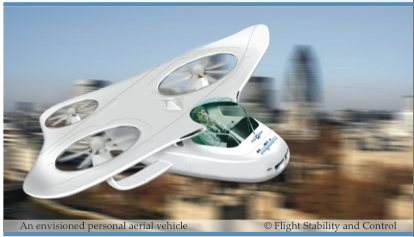This article is more than 1 year old
Grab your L-plates, flying cars of sci-fi dreams have landed
But queues, no parking and dodgy drivers all sound very familiar
Far from being a mere staple of science fiction, plenty of flying cars really do exist, we're told. But there's one problem: hardly anyone knows how to fly them.
That's according to Professor Michael Decker of MyCopter, the personal helicopter project at German university KIT.
Speaking at the Hitachi EU Science & Technology conference in London yesterday, Decker said the soaring-through-the-air bit wasn't the problem with flying runabouts; driver training and traffic management are the key obstacles impeding the dream of mass-market sky vehicles.
"You have to think about what kind of passengers, drivers or pilots we need. And it has to be affordable and usable for a large number of people," the brainiac said.

Getting commuters off the ground and into the air would rid our major cities and motorways of traffic jams, he said. Congestion on the roads wastes time, increases emissions from engines, and makes people unhappy. There is more space in the air than on land for people, he noted, and road maintenance costs would be avoided, obviously.
"If you want to reduce the congestion problem, you need to get thousands of cars up there," he told the conference.
Prototypes for personal helicopters have been built, he said, explaining that the MyCopters are electric and his engineers have found batteries that could power a flight for 100km (62 miles).
Decker said his research focussed on designing systems to manage thousands of mini-helicopters hurtling around at rush-hour, in a safe and non-air-rage-inducing manner, as office workers swapped their cars for hovering tech.
The professor laid out the requirements of a flying car: vertical take-off was essential and it has to be manoeuvrable by hand on land; the vehicle must also take commuters from home to work, door-to-door, because trips to airfields for each journey are out of the question.
Not surprisingly, a top concern was safety. "Cars don't fall down if they stop working, but this will not be like going to the side of the road; this will actually fall down and you will fall and probably die," Decker warned.
One of the major challenges is putting control of the vehicles into the hands of a computer, rather than a newbie pilot. Fully automated flights still require human supervision and intervention, and coping with emergencies is a big ask for the average commuter, Decker said. Using one of these metallic beasts will require more than a driver's licence, sending new owners back to driving school to lose their L-plates.
Decker outlined a few other barriers to the flying car dream: "Noise is also a big factor, if you have one of these taking off from your house every morning, you would find this very annoying."
And parking was also an issue. "If you are landing all these machines on a skyscraper, where do you put them all?" he asked.
A MyCopter costs about as much as a flash top-end car, but this price could come down to the level of a mid-range motor by the time the project gets, er, off the ground. ®
